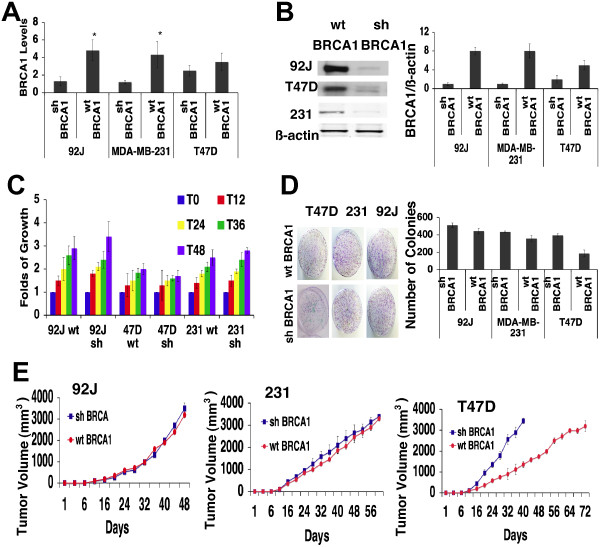Figure 1.

Human isogenic cell lines proliferation in vitro and tumor growth in xenografts. (A) Reduction in the levels of expression of BRCA1 in 92 J, MDA-MB-231 and T47D cells transduced with shBRCA1 lentivirus were determined by qRT-PCR and by Western blot analysis. (B) Western blot analysis showing BRCA1 levels. Immunoblot photographs of three independent experiments were also subjected to densitometry (right panel). (C) Fold change in cell growth rate in respect of the initial input of cells was measured in human isogenic cell lines. Data shown represent mean standard deviation (SD) from triplicate experiments. (D) Clonogenic assays performed on the three pair of isogenic cells. A total of 1,000 cells were seeded in 10 ml plates and grown for 21 days and counted at the end point. Data represent the mean SD from triplicate experiments. (E) 92 J, MDA-MB-231 and T47D isogenic cells were injected in the mammary fat pad of immunocompromised mice and the tumor volume was measured when they reached 3.5 mm3. Each experiment group consisted of five mice and each mouse had two tumors. The measurements on the graph represent the average of ten tumors per group. shBRCA1, sample with short hairpin RNA (shRNA) against breast cancer type 1 susceptibility (BRCA1).
